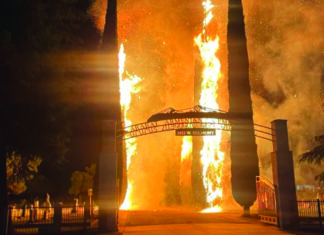The documentary “The Stateless Diplomat” brings attention to the legacy of Diana Agabeg Apcar, the first female Armenian diplomat and possibly one of the first female diplomats ever.
And with its gentle, artistically gorgeous approach, it succeeds.
One problem facing historical documentaries is how to flesh out a story without the benefit of film clips. In “Stateless,” the filmmakers solve the problem by using Japanese-style pen-and-ink drawings, by digital designer Lu Ke, to strike just the right note.
The images match the narration, often dissolving from one frame into another, creating an almost graphic novel look to the story of this venerable hero.
The film makes it clear that Apcar truly discovered her strength when she was pushed to the limit. The film opens with the sequence of Diana, a recent widow, in labor with her sixth child, while creditors seize her furniture in another part of the house. Her simultaneous joy over this the baby and despair over how to provide for her children create a whiplash effect for her and of course the viewer. Her late husband, not a great businessman, had run his company into the ground and Diana had to rescue the business in order to keep a roof over her head, all the while being tormented by the stories of the slain Armenians in Adana.
The film also interviews several historians and diplomats to shed light on this underappreciated Armenian heroine.










